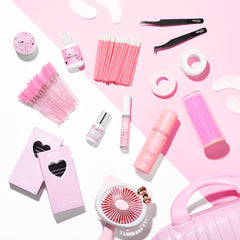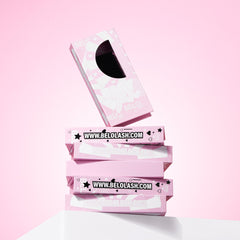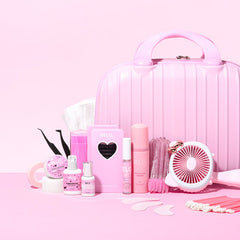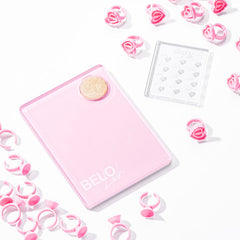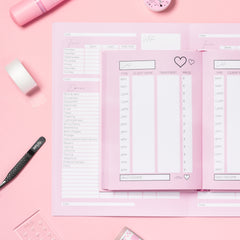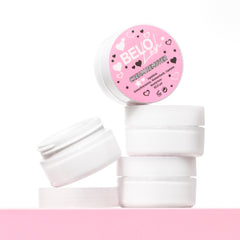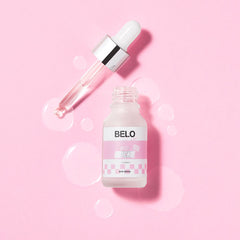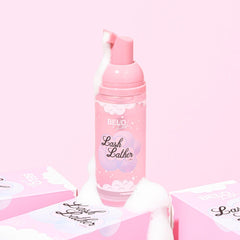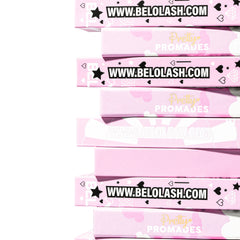While the lash extensions themselves play a significant role in achieving the desired look, the quality and composition of the eyelash extension glue used are equally important. As professional lash technicians, we spend a lot of time learning about different types of eyelash extensions, the best varieties of fans, how to apply them, and much more. It's also extremely important to know what goes into making up the contents of your adhesives as you use them day-in, day-out on clients. Eventually, a client may also ask about what adhesives are made up of and may need to know for allergy related reasons as the professional lash tech in the room, it's your responsibility to know the answer.
But don't fret BELO Babes, as we're here to clear up any confusion and provide all the necessary information to feel confident about lash glue so that you will finish reading this blog as an expert in all things adhesive. We're about to dive into the world of eyelash extension glue ingredients, exploring what goes into the formulation and how to make informed choices for safe and beautiful lash extension applications.

Main ingredients in lash glue
Cyanoacrylate
Cyanoacrylate is the main ingredient found in all professional lash adhesives thanks to its unique curing property. Curing is the chemical reaction where the adhesive crystalises, giving the lash glue that super strong hold and fast dying time, allowing lash extensions to be immediately glued to natural lashes when applying them.
Now we're going to get a bit science-y for a moment so bear with us! There are actually five different types of cyanoacrylate that can be used in the lash adhesives, and these different types all have their own characteristics such as drying time, viscosity, oil resistance, durability, breakage resistance and more. These fives types are:
-
Ethyl-cyanoacrylate
-
Methyl-cyanoacrylate
-
Butyl-cyanoacrylate
-
Octyl-cyanoacrylate
-
Alkoxy-cyanoacrylate
Despite there being five types, the most common type used in lash glue is ethyl-cyanoacrylate largely due to its fast curing speed, strong bond and ease of manufacturing. Some of our lash glues use different combinations of these ingredients which provide slightly different drying times and resistances to humidity.
Lash glues can have different combinations of cyanoacrylate which can give it either a faster or slower dying time. For example, our Bestie Bond Adhesive has a drying time of 1-2 seconds whereas our Bulletproof Max Adhesive has a super fast drying time of just 0.5 seconds.
PMMA
PMMA is the shortened term for the ingredient named polymethyl methacrylate. PMMA is another adhesive, but it plays a slightly different role to that of cyanoacrylate as it is about making the bond strong. Whilst cyanoacrylate is responsible for the quick drying time of the eyelash extensions, PMMA is responsible for the long-term adhesive strength of the extensions. It is an equally important part of any eyelash glue, as long-term retention of lash extensions is something every client wants.
Hydroquinone
There's a bit of a hint in this ingreident's name as to what role it plays in the mixture of chemicals found inside a bottle of lash glue. Hydroquinone is tasked with the job of keeping your eyelash glue a liquid, rather than hardening and solidifying in the bottle. For a more fancy way of putting it, hydroquinone acts as a stabiliser to stop the curing reaction from occurring so that the contents inside the bottle do not end up as a rock solid bottle of useless glue.
Carbon black
If you thought the last ingredient had a big hint as to what role it plays in a lash adhesive, then this is even bigger! As the name might suggest, this ingredient is responsible for creating the dark, black colour of the lash adhesive. It is essentially used as a dye which provides a gorgeously sleek, silky black look to all our lash glues. It's important to note that this ingredient will only be found in adhesives that are black. If a lash adhesive is clear, carbon black will not be present.
The majority of lash glues have a black colour to them as it can better define the lash line and help the eyelash extensions to stand out more. However, clear lash glue is great for those clients who want extensions that complement their natural lashes rather than going for a more dramatic look.
Is latex used in lash glue?
Many lash extension glues used to include latex due to its naturally rubbery properties. Adhesives containing latex used to be popular as this ingredient increased their resistance and strength against moisture and oil, which in turn helped eyelash extensions to stay fixed for longer.
However, the problem was that many clients would experience allergic reactions to their adhesives due to latex-allergies, which are fairly common. To add to this problem, anyone can experience an allergic reaction to latex at any point as this allergy can be developed throughout life.
As lash techs, it's also important to be aware of the symptoms of an allergic reaction to latex. These can include symptoms such as itching, skin redness, rashes, sneezing, scratchy throat, and in more severe circumstances, wheezing, coughing, or difficulty breathing. In very rare cases, individuals may experience anaphylaxis.
Sounds scary, right? At BELO Lash, we don’t take any risks with you and your clients. All of our lash adhesives are latex-free so that every client can experience the quality of your adhesives without having to worry about an allergic reaction occurring.
Is there formaldehyde in lash glue?
This is a hot topic amongst eyelash extension artists in the industry due to the toxic nature of this chemical. The answer is yes, but not in the way you might think. Formaldehyde is not an ingredient that is used in creation of lash adhesives, however, it does occur naturally in very small quantities as other ingredients in the adhesives decompose. Although it is not intentionally added, this is the reason that adhesives cannot technically be called formaldehyde-free.
However, in order for this chemical to cause harm to someone's health it must be inhaled in large quantities. Whilst adhesives contain very small amounts so they are safe for your clients, lash technicians are exposed to this chemical all day which is why it's important to apply eyelash extensions in a well-ventilated room only.
If you're curious about what other ingredients should be avoided to ensure the safety and longevity of your lash extensions, you can read more in our blog on Ingredients to Avoid with Eyelash Extensions.
Conclusion
Having an understanding of what ingredients are used in eyelash extension glues help to make you an overall better lash technician. Whilst knowing how to choose the right adhesive is essential, so too should be knowing exactly what you are putting on your clients’ eyelids.
Clients are more beauty-conscious today than ever, and you certainly don't want to be caught off guard when they ask what exactly is in the products you are using! Knowing the answers can help to put your clients minds at ease, build trust, and help prevent any unfortunate allergic reactions – especially to your sensitive clients.
It's important to mention that all of our adhesives are for professional use only due to their very fast drying times and strong bonds. We also stock an airtight adhesive container to keep your lash glues stored safely. Feel free to contact us and we'll be happy to help with all things eyelashes!


